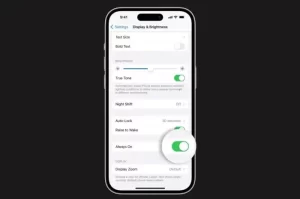Settling a loan early can be a smart financial move that helps you save on interest payments and achieve debt freedom sooner. Whether you have a mortgage, car loan, personal loan, or student loan, paying off your debt ahead of schedule can lead to significant long-term savings and financial flexibility. Here’s a comprehensive guide on how to settle a loan early and save on interest:
1. Understand Your Loan Terms
Review Loan Agreement
Familiarize yourself with the terms and conditions of your loan agreement, including interest rate, repayment schedule, prepayment penalties, and any restrictions on early repayment. Understanding your loan terms will help you determine the most cost-effective strategy for settling your loan early.
Calculate Outstanding Balance
Determine the current outstanding balance on your loan, including principal amount and accrued interest. Contact your lender or check your account statement to obtain the latest payoff amount.
Also Read
Related Topics: Bulbul Balige Beach, the Charm of the Exotic Beauty of White Sand on Lake Toba
2. Evaluate Your Financial Situation
Assess Cash Flow
Evaluate your current financial situation, including income, expenses, savings, and emergency fund. Determine how much discretionary income you can allocate towards accelerated loan payments without compromising your other financial obligations and goals.
Consider Interest Savings
Use online loan calculators or financial planning tools to estimate the potential interest savings from settling your loan early. Compare the total interest costs of paying off the loan according to the original schedule versus an accelerated repayment plan.
3. Explore Prepayment Options
Check Prepayment Policy
Review your lender’s prepayment policy to understand any fees or penalties associated with settling the loan early. Some loans may have prepayment penalties or restrictions on early repayment, while others offer flexibility and incentives for early settlement.
Negotiate with Lender
Contact your lender to discuss prepayment options and negotiate favorable terms for settling the loan early. Inquire about any prepayment penalties, restrictions, or administrative fees that may apply, and request a payoff statement to confirm the total amount due.
4. Create a Repayment Strategy
Prioritize High-Interest Debt
If you have multiple loans, prioritize paying off high-interest debt first to minimize overall interest costs. Allocate extra funds towards the loan with the highest interest rate while making minimum payments on other debts.
Set Up Automatic Payments
Consider setting up automatic payments or recurring transfers to ensure consistent and timely repayment of your loan. Automatic payments can help you stay disciplined and avoid late fees while accelerating debt payoff.
5. Increase Monthly Payments
Make Extra Payments
Increase your monthly loan payments by adding extra funds towards principal reduction. Even small additional payments can make a significant impact on reducing interest costs and shortening the loan term.
Use Windfalls and Bonuses
Allocate windfalls such as tax refunds, bonuses, or unexpected income towards loan repayment. Apply any extra income or lump sum payments towards the outstanding loan balance to accelerate debt payoff.
6. Consider Refinancing or Consolidation
Explore Refinancing Options
If interest rates have decreased since you obtained the loan, consider refinancing to secure a lower interest rate and potentially shorten the loan term. Refinancing can help you save on interest costs and pay off the loan faster.
Consolidate Debt
Consolidate multiple loans into a single loan with a lower interest rate or more favorable terms. Debt consolidation can simplify repayment, reduce interest costs, and streamline your finances.
Read: Gibeon Sibisa Hill, A Refreshing Natural and Religious Tourism Destination in Toba Samosir
7. Monitor Progress and Adjust Strategy
Track Loan Progress
Monitor your loan balance, interest accrual, and repayment progress regularly to stay on track towards your goal of settling the loan early. Review your account statements, online dashboard, or lender portal to track payments and monitor changes in loan status.
Adjust Repayment Strategy
Periodically reassess your repayment strategy and adjust your approach based on changes in your financial situation, interest rates, or loan terms. Consider refinancing opportunities, windfall income, or changes in expenses to optimize your debt payoff strategy.
By following these steps and implementing a proactive approach to loan repayment, you can settle your loan early, save on interest costs, and achieve financial freedom sooner. Prioritize debt reduction, allocate extra funds towards loan repayment, and explore opportunities to refinance or consolidate debt to accelerate your journey towards debt-free living.

















